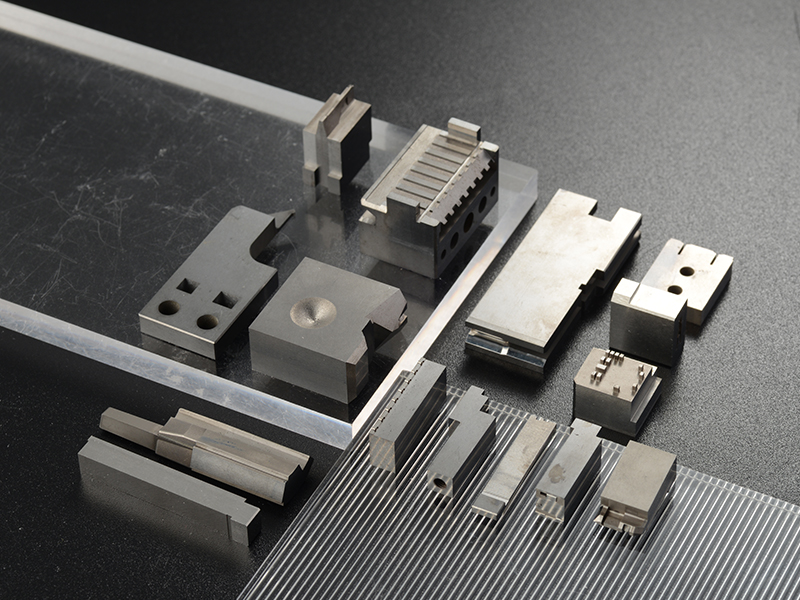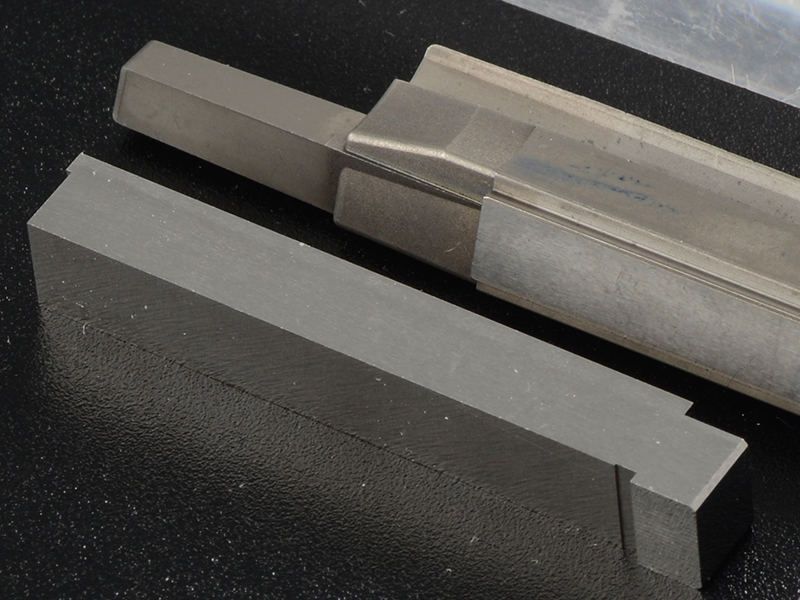Metal
Stamping Die Parts are crucial for achieving efficient and precise metal processing.
A stamping die is a tool used for metal stamping processes, enabling the shaping and sizing of metal sheets through methods like stamping, shearing, and forming. If your stamping die parts are damaged or lost, we can manufacture replacements.
To meet customer demands, we employ advanced manufacturing techniques, including
cnc machining, Electrical Discharge Machining (EDM), and surface grinding, with tolerances reaching ±0.002mm. We produce a variety of mold inserts ranging from small and intricate parts measuring a few millimeters to large components up to 500 millimeters long.
Applications of Stamping Dies
Stamping dies find wide application in industries such as automotive, appliances, electronics, aerospace, etc., for producing various metal parts. Examples include body components, electronic component casings, appliance parts, aerospace components, medical device parts, etc. Stamping dies enable efficient, large-scale production with high precision and stable quality.
Key Design Points for Stamping Die Parts
●Material Selection: The choice of material significantly impacts die lifespan, considering factors like material type, chemical composition, microstructure, hardness, and metallurgical quality. Different materials often result in varying die lifespans. Thus, materials with high hardness, strength, wear resistance, adequate toughness, high hardenability, and minimal deformation during heat treatment (or less susceptibility to deformation) are preferred. Common materials include high-speed steel, hard alloys, tungsten steel, etc.
●Structural Design: Die structural design must consider stamping force, material flow, product precision, etc., to ensure durability and production efficiency.
●Surface Treatment: Working surfaces of dies typically require heat treatment and surface hardening to enhance wear resistance and anti-adhesion properties.
●Guidance and Positioning: Precise guidance and positioning mechanisms are essential to ensure correct material placement during the stamping process.
●Springs and Air Cushions: These aid in rapid die opening and closing, as well as smooth demolding of stamped products.
●Precision Requirements: Stamping die parts must be designed to meet high precision requirements to ensure stamped parts conform to design specifications.
●Durability: Wear-resistant materials and appropriate heat treatment should be chosen to enhance wear resistance and impact resistance, thereby extending die lifespan.
●Ease of Maintenance: Die designs should facilitate routine maintenance and repairs to minimize downtime.
●Safety: Operator safety considerations should prevent accidents during operation.
Common Processing Methods for Stamping Dies
Common processing methods for stamping dies include CNC machining,
EDM Machining,
Wire cutting, etc. These methods enable the manufacturing of complex-shaped die parts, ensuring high precision and good surface quality.
Methods for Surface Finishing of Stamping Die Parts
To enhance die strength, the final stage of stamping die fabrication involves precision surface finishing to eliminate fine cracks and prevent damage during the powerful impact forces exerted by press machines.
Hand Grinding and Polishing: Traditional methods rely on the operator’s experience and skills. Hand polishing is time-consuming and inefficient, especially for complex surfaces or intricate details.
Mechanical Precision Machining – Grinding: Common grinding equipment includes surface grinders, internal and external cylindrical grinders, and tool grinders. To ensure accuracy, CNC machining is generally employed. The choice of grinder depends on the part’s shape, with surface grinders suitable for flat parts and cylindrical or tool grinders for curved or contoured parts.
Mechanical Precision Machining – CNC Milling: This method offers fast processing and high-quality finishes, suitable for most die surfaces except for internal sharp corners or extremely narrow and deep cavities.
Other non-mechanical precision machining methods include ultrasonic machining, electrical discharge polishing, laser precision machining, chemical polishing, electrochemical polishing, etc.
Die manufacturers select appropriate finishing methods based on die characteristics and the difficulty of achieving machining precision, aiming to save costs and improve production efficiency.





